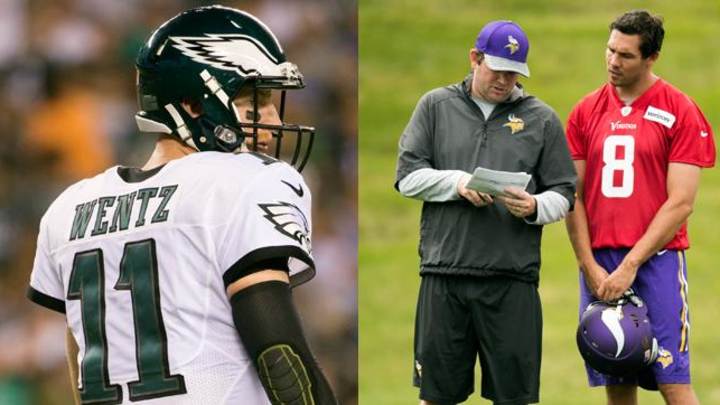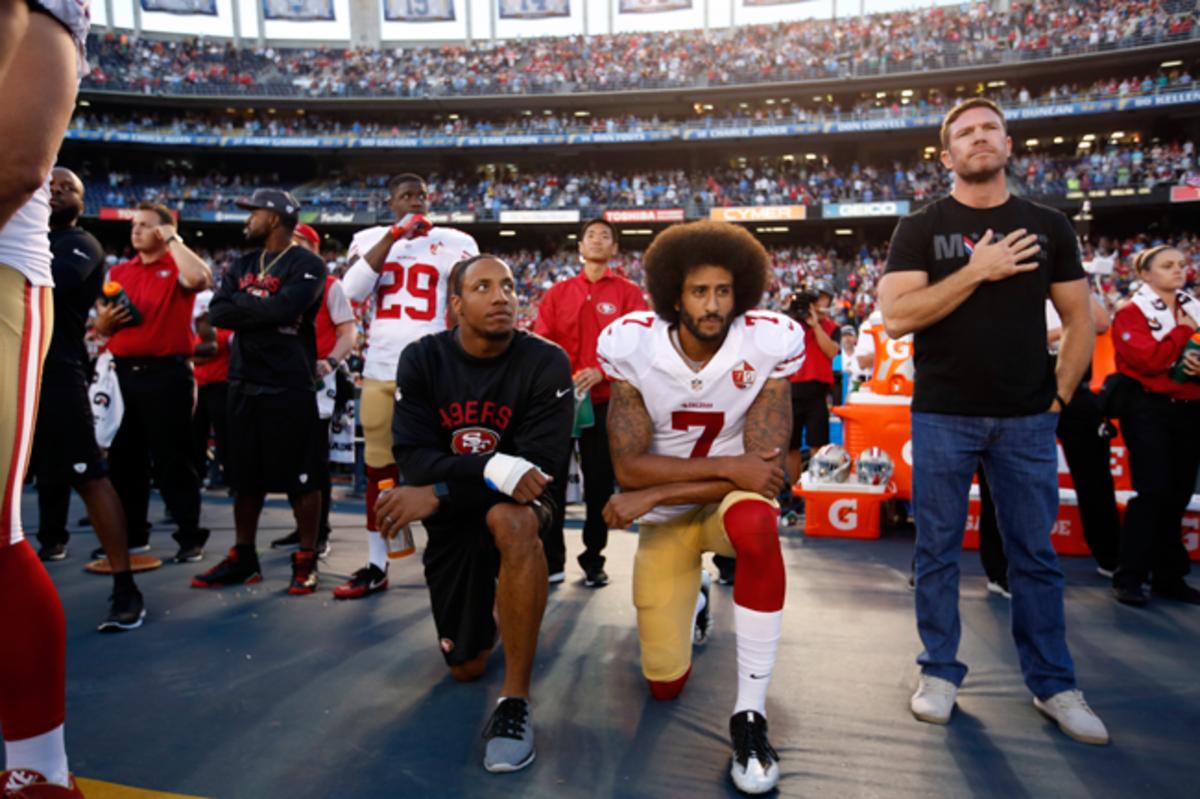How Quickly Things Change

As much we would like to credit savvy and shrewd NFL general managers for important player personnel moves, some of the most impactful transactions come simply from good fortune or the inaction of other teams.
Consider: Drew Brees was set to join the Dolphins in free agency in 2005, except Miami’s team doctors would not sign off on Brees’ injured shoulder and he signed with the Saints. A year later, Aaron Rodgers was the lone name with a first-round grade when we made our pick in Green Bay after 23 teams chose otherwise; we certainly didn’t intend to draft a quarterback. Most recently, the Vikings and Eagles made a transaction at a position both were content with just a week ago. As the eminent philosopher Mike Tyson says, “We all have a plan until we get punched in the face.”
In the split-second it took for Teddy Bridgewater to suffer a season-ending non-contact injury in practice 1,500 miles from Philadelphia, the Eagles accelerated their future plan to the present. Wentz went from being an inactive third quarterback to the starter, and the Eagles now have a first-round pick in the 2017 draft, which is being held in Philadelphia. That, my friends, is how major NFL decisions happen more often than you realize.
The Eagles spent $58 million (now $47 million) in guaranteed money at the quarterback position alone this offseason to secure the present (Sam Bradford) and future (Carson Wentz) with Chase Daniel filling any gaps in between. Bradford chafed in April at the placeholder role and sought a trade, but agent Tom Condon could only muster a mid-round pick offer from the Broncos. The Eagles’ plan was to get a solid and injury-free performance from Bradford this season to net them as much as a second round 2017 draft pick before moving on to Wentz.
That was then; this is now. Eagles’ general manager Howie Roseman leveraged the Vikings desperation into a 2017 first-round pick (and a future conditional pick), certainly more than the Eagles could have expected in return for Bradford next year. The trade showed the value of having a general manager like Roseman who is schooled in the game of value and negotiations and isn’t just some “football guy.” The Vikings, of course, understand value and certainly tried to offer a lot less than a first-round pick in exchange for Bradford, but they had the desperation factor.
From the Vikings’ perspective, however, their value comes from Bradford’s contract. The Eagles paid the $11 million signing bonus, leaving Minnesota with a 2017 tab of a reasonable $7 million (the same amount that the Eagles are paying Daniel this season). When Bradford’s discontent arose in April, I thought there was no way the Eagles would spend $11 million of Jeffrey Lurie’s money for him to play somewhere else. That, however, was when there was no thought of getting a first-round pick in return. Would the Eagles have traded Bradford for a second-rounder (and perhaps a lower pick thrown in)? My sense is that they would have swallowed hard, having paid Bradford $11 million to participate in OTAs, but ultimately would have done so.
Speaking of which, Bradford, the last bonus baby of the old rookie compensation system, now leaves the Eagles after one season and $24 million. In a world heavily tilted toward management, Bradford is clearly a winner in the business of football.

Views on Kaepernick
I gained new respect for Kaepernick for being raw, unscripted, open and honest about an uncomfortable topic. Many applauded NBA stars in July for talking about a need for change at the ESPY Awards. Kaepernick is doing more than just talking about it. I appreciate when players are interesting and interested; Kaepernick has become both.
As to the league’s reaction, the NFL deserves kudos for handling a potentially combustible situation quickly and quietly, saying it “encourages but does not require” standing during the anthem. In doing so, it immunized other players doing the same, which has happened and will continue. Kaepernick has started something that may last a while.
I was in Green Bay last weekend and talked with Aaron Rodgers. I have always found Aaron to be refreshingly honest and intelligent, and he had some interesting thoughts on Kaepernick.
“The great thing about our country is the fact it was created with the Bill of Rights outlining several liberties that are as important as the air we breathe,” he said. “When I look at the flag I think of it as the greatest ideals in what the United States of America could be, not the worst. But, that shouldn’t diminish anything that Colin said or stands for at all because the issues that he is talking about are very important and there needs to be a conversation about those things.”
Labor Day = Less NFL Labor
Labor Day weekend had one meaning to me as a player agent and team executive: a massive reduction in NFL labor. Hundreds of NFL players became ex-NFL players, with many never having had any realistic chance of making the team. I know there are exceptions, but ask yourself this: of the more than 1,000 players cut over the past two weeks, how many were surprises? Ten? Twenty? Rosters are largely set long before training camp starts.
There are two things that most people do not realize about teams cutting rosters. First, a large part of the discussion revolves around medical, with team doctors and trainers put on the spot as to players’ likelihood for being injury free. When cutting to 53 players, front offices and coaches are really cutting to the 46 game-day active rosters and who will be “up.” Those numbers games will knock out some good players.
Rodgers also had some interesting comments on NFL labor, regretting not being more involved in the last CBA and implying that he may be more involved in the next one.
“If I’m fortunate enough to be around for the next one I think it could be an opportunity to help out the next generation of players,” he said. “If that’s wanted by the union, I’d be open to that. Because I think we need some really strong leaders when we come back to the table. And realize that as opposed to the last time the CBA rolled around I think we have more bargaining power than maybe we show.”
In the NBA-NBPA negotiations, the fact that Chris Paul and LeBron James had leadership roles had to mean something for the entire union. Players such as Rodgers would bring a gravitas to the negotiations that has been lacking from the players’ side. Listen to my entire interview with Aaron.
Extending Drew Brees
Brees was the last hope for this year for a player to receive a fully guaranteed veteran contract beyond the standard contract of “two years and then we'll see.” Alas, Brees has nothing guaranteed beyond the $44.25 million he will make over two years. Previously scheduled to make $20 million this year, he will now make $31.25 million ($30 million signing bonus, $1.25 salary). I thought Brees and agent Tom Condon could have leveraged a stronger deal, but one cannot fault a $22.125 million average at this stage of his career.
As to the Saints, while they avoid any cash obligations beyond next year, they continue to push out salary cap problems as if they think they can press a “File Delete” button at some point. There was already $10 million of leftover proration on Brees’ last contract and they now add $24 million of future proration from the current signing bonus. Were the team to walk away after 2017, as the contract suggests they will, Brees would carry an $18 million cap charge even though he’d no longer be there. The Saints worry-about-it-later cap management will continue to affect their product on the field.
• Question? Comment? Let us know at talkback@themmqb.com
